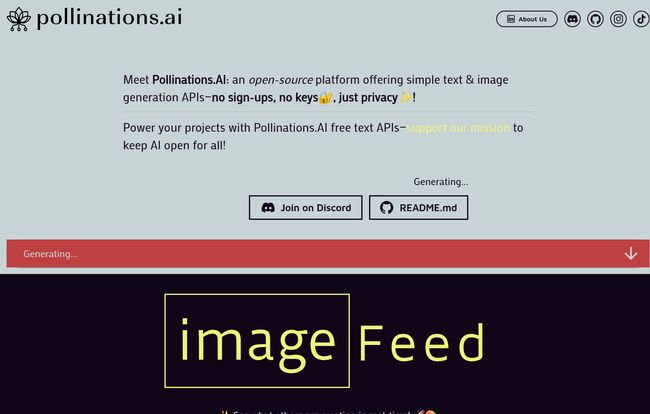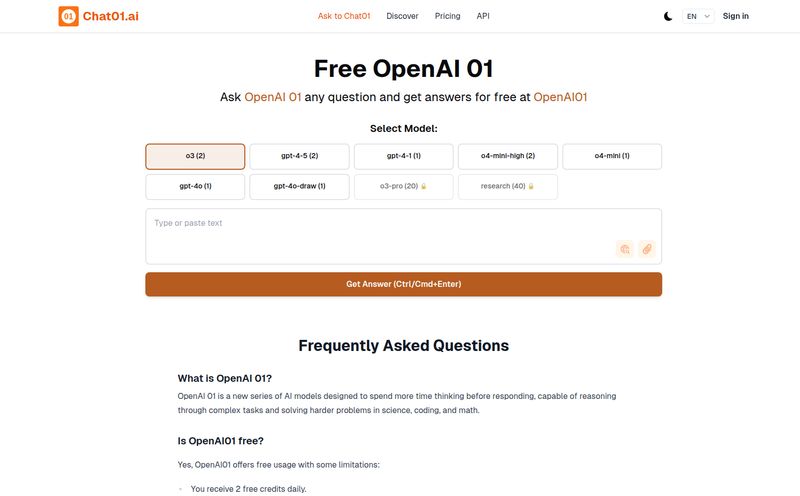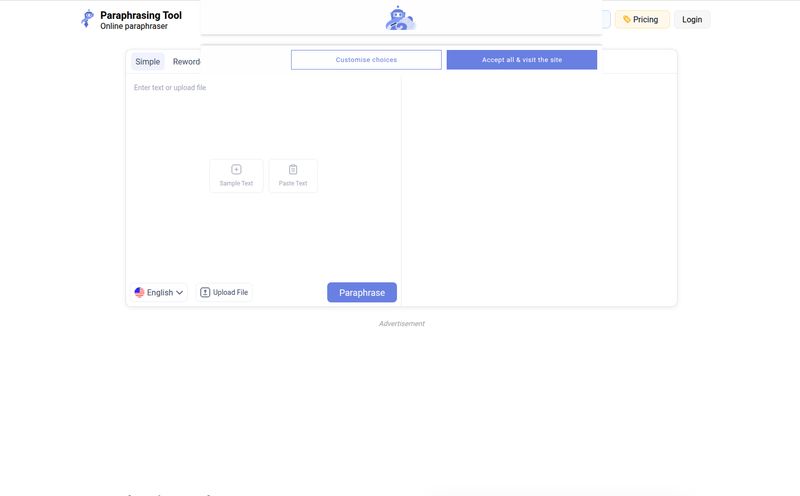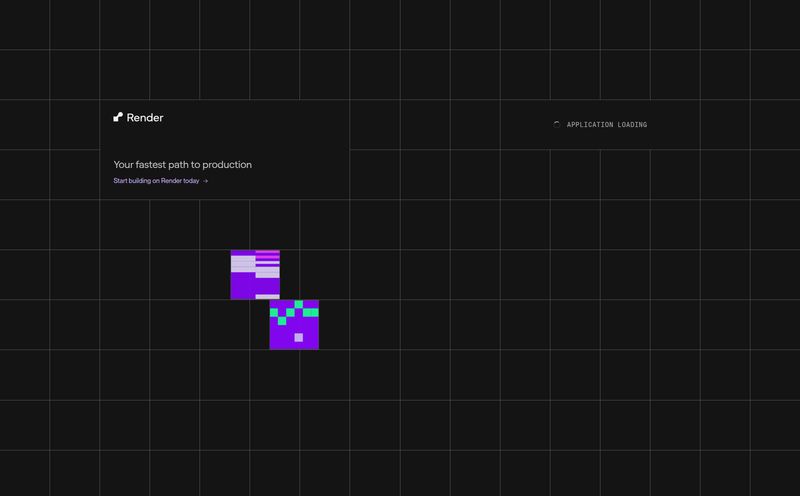The AI space is getting... expensive. And a little walled-off. Every week there’s a new mind-blowing model, but it’s usually locked behind a slick interface with a tiered subscription plan that requires a finance degree to decipher. As someone who’s been in the SEO and traffic game for years, I’ve seen this pattern before. A new technology emerges, it’s wild and open, and then slowly, the walls go up.
So when I stumble across a project like Pollinations.ai, I get a little bit excited. Cautiously optimistic, you could say. It feels like a throwback to the early days of the internet, a project driven by a mission rather than a monetization strategy. The headline on their site is simple: keep AI open for all. No sign-ups, no keys, just pure, unadulterated AI generation. But is it too good to be true?
So, What Exactly is Pollinations.ai?
At its core, Pollinations.ai is an open-source platform designed to make AI-powered creation accessible to everyone. Forget fancy user interfaces for a moment; this is about the raw ingredients. They provide APIs for generating text, images, and even audio that you can plug directly into your own websites, bots, or creative projects. Their stated goal is to “diversify creativity,” which I love.
It feels less like a polished corporate product and more like a bustling community workshop. A bit messy, maybe, but buzzing with real creative energy. The front page shows a live “Image Feed” of what people are making in real-time, which is a fantastic touch. It’s a constant stream of inspiration and a reminder that this is a living, breathing community.

Visit Pollinations.AI
The Good Stuff: Why I’m Genuinely Excited
I’ve been poking around Pollinations.ai for a while, and a few things really stand out. This isn’t just another AI wrapper; there’s a real philosophy here that resonates with me.
Truly Free and Open Source
This is the big one. It’s free. Genuinely, properly free. In a world where every AI tool has a “pro,” “plus,” and “enterprise” tier, Pollinations.ai just… exists. For you to use. Being open-source means you can even peek at the code on their GitHub. This transparency is a massive breath of fresh air. There are no black boxes here. You know what you’re getting, and the entire project benefits from the collective brainpower of its community.
Shockingly Easy to Get Started
Okay, “easy” is relative. But for anyone who’s ever wrestled with OAuth 2.0 protocols just to get an API key, this is a dream. Their site gives you simple code snippets to get started. Want to generate an image with an HTML tag? Done. Need to integrate it into a React app? Here’s the code. No sign-ups. No credit card on file. No API keys to juggle. You can literally start pulling from their API right now. It's wild. This also means it's incredibly privacy-focused. You are, for all intents and purposes, anonymous.
More Than Just a Pretty Picture Generator
While the image generation is probably the most eye-catching feature, it’s not the whole story. Pollinations.ai also provides APIs for text and audio generation. The “Projects” section on their site is a testament to its flexibility, showcasing things like Vibe Coding (a coding assistant), Social Bots, and PairFusion for collaborative content creation. This isn’t just a tool for making cool art; it's a foundational layer for building new and interesting applications.
A Look Under the Hood for the Tech-Savvy
For my fellow tech nerds, the “Integrate” section is where things get interesting. They lay out the API endpoints clearly and even mention something called a “Model Context Protocol (MCP) Server.” I had to do a bit of digging here, but it seems to be their method for managing and serving different AI models. This is the kind of detail that signals a serious, well-thought-out project, not just a weekend hack.
They’re also supported by some heavy hitters in the tech world, like AWS, Hugging Face and GitHub. That kind of backing provides a lot of credibility and suggests this platform has the infrastructure to handle some real work. Its a powerful combination of grassroots community spirit and robust, big-tech support.
Okay, What's the Catch? A Reality Check.
Nothing is perfect, especially not in the FOSS (Free and Open-Source Software) world. While I’m a huge fan of what Pollinations.ai is doing, it’s important to go in with your eyes open.
First, the documentation, while functional, assumes a certain level of technical know-how. If you’re not a developer, you’re going to have a hard time. This isn’t a point-and-click tool like Canva; it's a set of building blocks for people who know how to code. Second, because it’s a free and open service, performance can sometimes vary depending on the load. You're not paying for a dedicated server, so you can't expect guaranteed uptime or lightning-fast responses every single time. It’s a trade-off. Finally, many features and their ongoing stability depend on community contributions. Some folks might see that and run for the hills, looking for the safety of a corporate Service Level Agreement. And that's fair! But for the rest of us... that's where the magic happens. The community is where innovation thrives.
Who Should Be Using Pollinations.ai?
So, who is this for? In my opinion, Pollinations.ai is a perfect fit for a few groups:
- Developers and Hobbyists: If you want to experiment with AI in your projects without selling a kidney to pay for API calls, this is your sandbox.
- Artists and Creators: For those who are technically inclined, it offers a way to build unique tools tailored to your creative process.
- Startups and Small Businesses: A fantastic way to prototype AI features or generate content without any initial investment.
Who might want to wait? Large enterprises that need iron-clad reliability, dedicated support channels, and predictable performance might find the community-driven model a bit too wild west for their mission-critical applications.
FAQ: Your Questions About Pollinations.ai, Answered
I've seen a few questions pop up, so let's tackle them head-on.
Is Pollinations.ai really free?
Yes. It’s built on an open-source model and is free to use. The project is supported by sponsors and the community, not by user fees.
Do I need an API key to use it?
Nope. For most of the basic generation features, you can make calls directly without any authentication, which is one of its most unique aspects.
What can I create with Pollinations.ai?
The platform primarily supports image, text, and audio generation. You can use these APIs to create anything from blog post images and social media content to interactive story bots and generative music.
Is it hard to use?
If you've never written a line of code, yes, it will be challenging. It's designed for people with some development experience. For a developer, however, the provided examples make integration look pretty straightforward.
How does it compare to Midjourney or DALL-E 3?
It's a different beast entirely. Think of Midjourney as a high-end restaurant where you order a finished meal. Pollinations.ai is more like a community garden where they give you the seeds, soil, and tools to grow your own food. It's a foundational layer for building with AI, not just a consumer app for using AI.
Where can I get help if I get stuck?
The community is your best bet. Their Discord server and GitHub page are the main hubs for discussion, support, and collaboration.
Final Thoughts on This AI Collective
I’m rooting for Pollinations.ai. In an industry that is rapidly commercializing, projects like this are more important than ever. It's a powerful reminder that innovation doesn't always have to come from a multi-billion dollar corporation. Sometimes, it comes from a decentralized group of passionate people building something cool and giving it away for free.
It may not be the most polished tool on the market, but it has something much more valuable: a soul. It’s a platform built on a belief in open access and shared creativity. And in today’s world, that’s something worth supporting.
References and Sources
- Pollinations.ai Official Website
- Pollinations on GitHub
- Official Pollinations Community Discord
- WIRED: The Buzzy, Messy World of Open-Source AI



